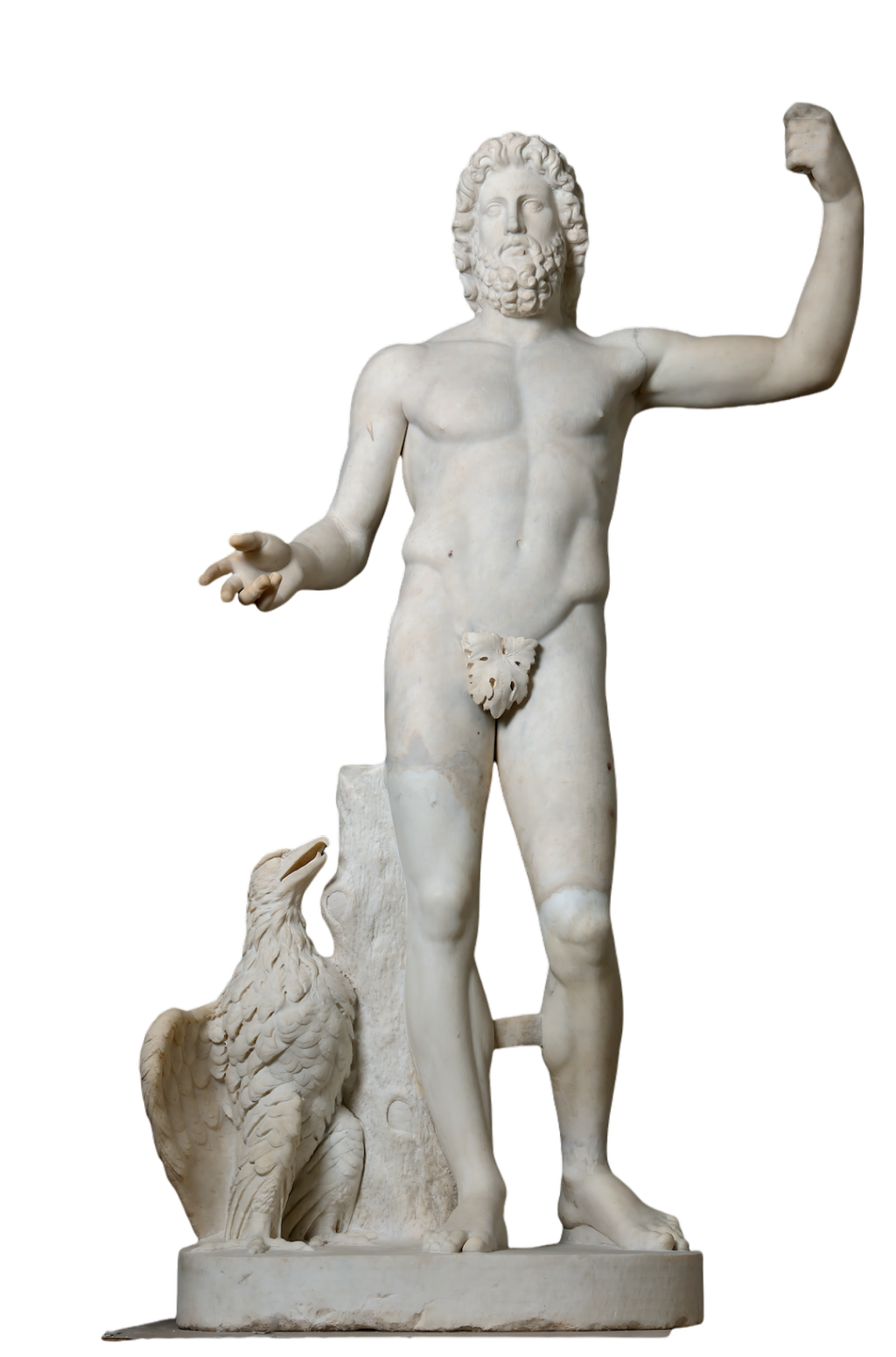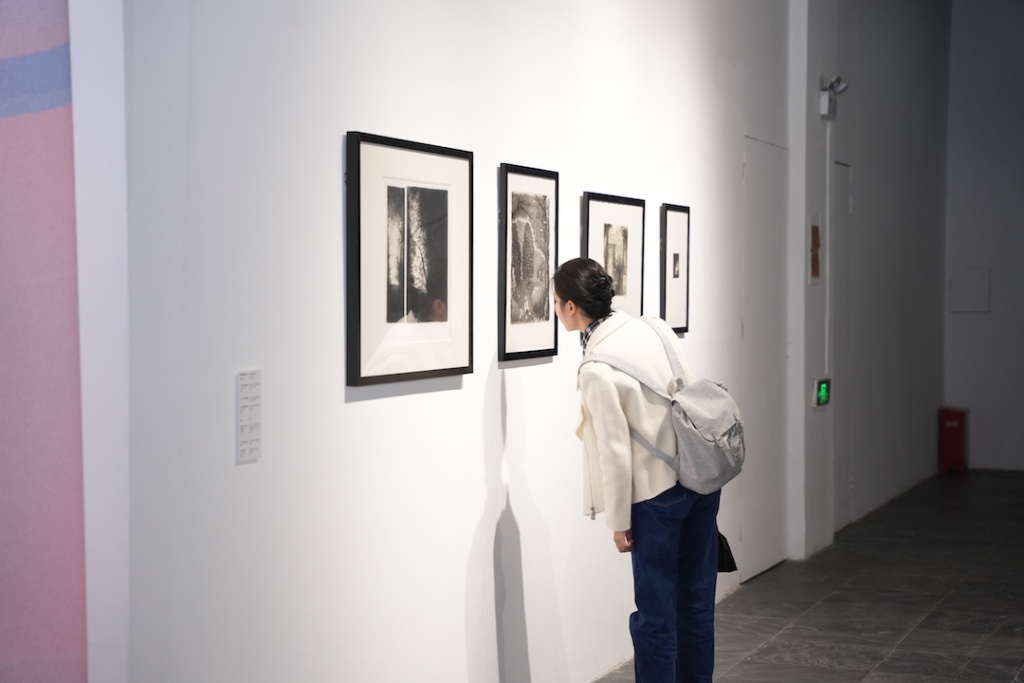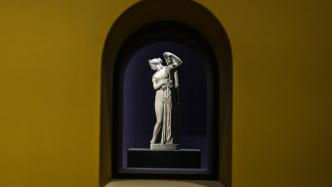
"Beautiful Lands: Collections of the National Archaeological Museum of Naples" is currently on display at the Pudong Art Museum in Shanghai. It includes about 70 collections from the National Archaeological Museum of Naples, Italy, and ancient Roman civilization more than 2,000 years ago, presenting the power of pure beauty.
This exhibition is the first large-scale cooperation between the National Archaeological Museum of Naples and a Chinese modern and contemporary art institution. Mario Grimaldi and Italian applied art historian Clara Tosi Pamphili (Clara Tosi Pamphili).
In an exclusive interview with The Paper Art Review recently, Darrenli and Grimaldi talked about the cultural exchanges between the East and the West extended from the exhibits, life in ancient Rome and the archaeology of Pompeii today from the perspective of exhibitions and research. The exhibition involves mythological traditions and daily life. Darenli believes: "Mythological stories and traditions are the source of inspiration for human daily life."
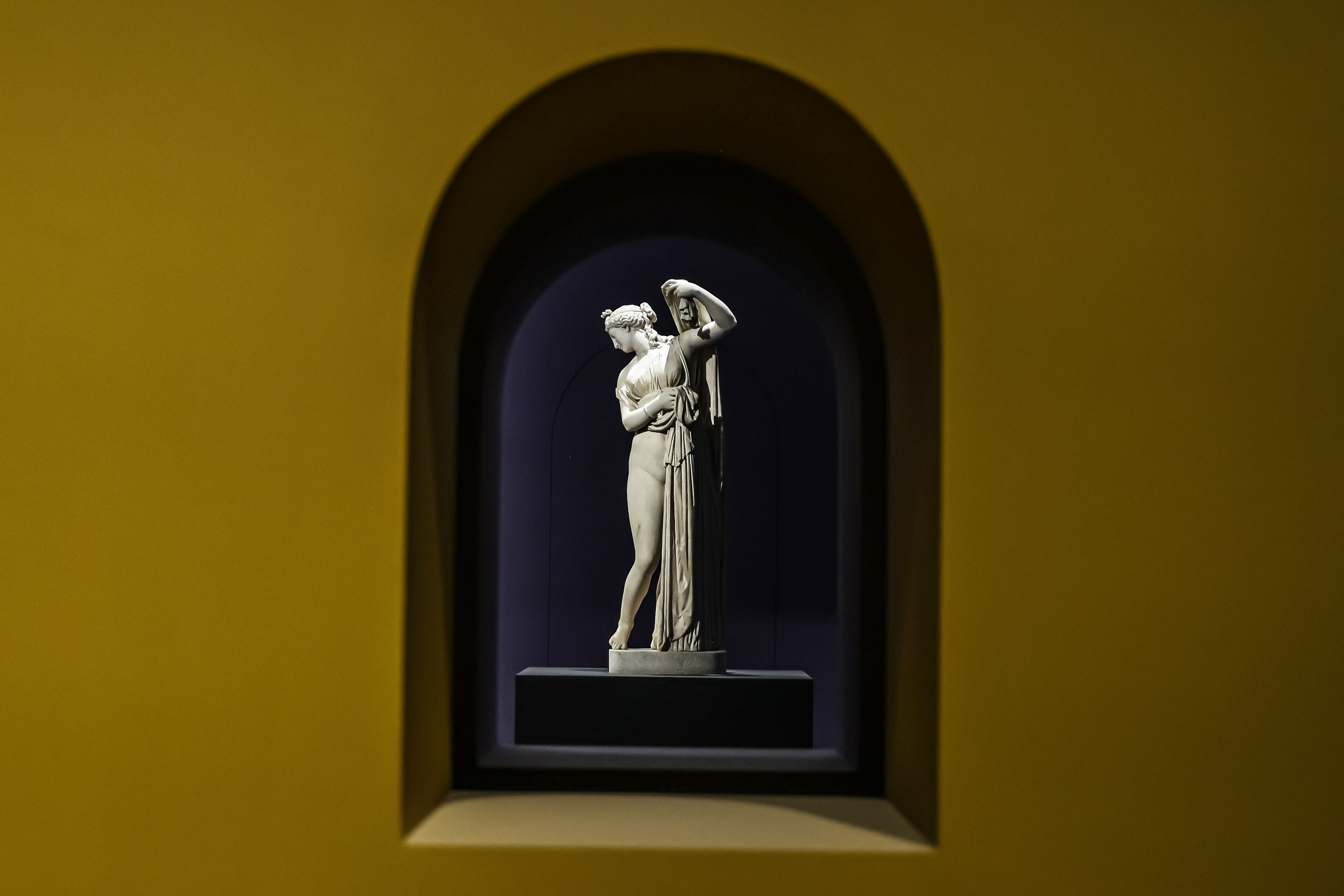
Exhibition site "The Back of Venus", 2nd century AD, collected by the National Archaeological Museum of Naples, Rome
"Walking through the villa", imagining the life of the ancient Romans
The Paper: The name of this exhibition is "A Realm of Absolute Beauty", and the word "beauty" appears most frequently in the exhibition. Why is the exhibition named after this?
Darenli: The exhibition "Perfect Beauty" is one of the series activities of "2022 China-Italy Year of Culture and Tourism". Strictly speaking, this is not an archaeological exhibition about ancient Roman civilization, but a space that highlights the beauty of everyday life, manifestations of power and sacred expression. Although artworks from the past are on display, every viewer has the opportunity to rediscover beauty in a timeless experience, not just limited to the past. As long as this kind of beauty is displayed before our eyes, it belongs to our era and becomes the beauty of the times without a doubt.
The Paper: Last year, the Archaeological Museum of Naples presented the "Pompeii Exhibition" at the Tokyo National Museum. What are the similarities and differences between the exhibition at the Pudong Art Museum and the Tokyo exhibition?
Darenli: The "Pompeii exhibition" at the Tokyo National Museum in January 2022 will undoubtedly feature a large number of ancient masterpieces, but this exhibition is based on a more common and pre-existing idea of depicting the ancient world through works, showing the past life. Shanghai's "Beautiful Land" presents a past expressed in contemporary language in an ingenious way, making it unique among similar exhibitions. The display design of the exhibition is lively and lively, incorporating the shape, color and space characteristics of our era, and integrating them into one, highlighting the beauty itself and embodying the eternal beauty. Another unique feature of the exhibition is the collection of precious marble sculptures from the National Archaeological Museum of Naples, all belonging to the Renaissance Farnese Collection. The "Farnese Collection" is one of the most important collections of ancient Roman cultural relics in Europe and the world, founded in Rome in the 16th century. In the long period of time that followed, the series of collections gradually expanded, including many statues of characters in Greek and Roman mythology.
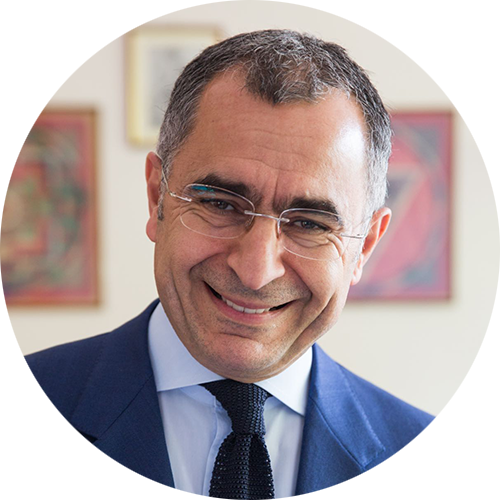
Francesco D'Arelli
The Paper: The exhibition can see a Rome where "gods" and "humans" run side by side. From ancient Greece to ancient Rome, how did the artistic style inherit and change? From Venus and Apollo to sculptures of Roman emperors and philosophers, to daily necessities, how do these exhibits connect the history and life of Rome, as well as the changes in artistic styles?
Darenli: In the Greco-Roman world in the first few centuries AD, people’s common perception would convey a similar concept, which is also reflected in our exhibition: “Man is God who is mortal, God is God who lives forever. Immortal." Among other things, the Roman emperor held the title of "pontifex maximus," the person who acted as a "bridge" between the human world and the divine world. In fact, in Rome, gods and men shared similar dimensions of space and time. In this way, Roman civilization raised to the highest degree the sacred tradition inherited from Greek civilization, also due to the fact that the Greeks had lived in southern Italy since the eighth century BC.
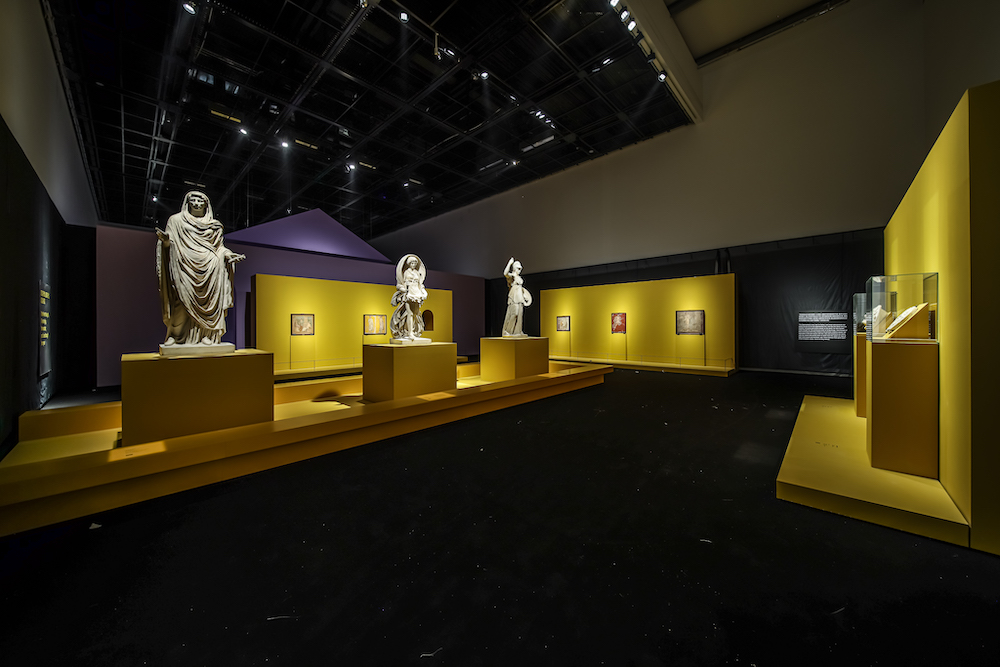
"Love and Beauty" unit, from left to right are Davia, Diana and Minerva (Athena)
Specifically in the exhibition, there are five sculptures in the "Love and Beauty" unit, among which the four "Gods" are Diana, Minerva (Athena), Apollo and Aphrodite (Venus), A "person" is the cottage Davia. Via the Cabana, sister of Augustus, in her gown, is an ideal example of feminine simplicity in the period of Giulio Claudian. Women's fashion under Augustus reflected a return to austere aesthetics, but this aesthetic did not abandon the charm and beauty of the female body, especially the variety of hairstyles. Through the sculpture of the Cabana da Via, an early imperial prototype of monumental sculpture, it became one of the largest and most impressive sculptures in Roman public architecture. At the same time, sculptors in ancient Greece and Rome would deliberately choose some people as prototypes, giving them creative techniques and expressions close to God, trying to express eternal existence.

"Little Via"
The Paper: "Pompeii" is an unavoidable topic in the archaeological exhibition. How does the exhibition present the ancient cities of Pompeii and Herculaneum before and after the eruption of Mount Vesuvius?
Darrenli: Pompeii and Herculaneum are actually only indirect protagonists, because the exhibition is not to present the life of Pompeii and Herculaneum, but to present the eternal beauty. However, most of the nobles in Rome settled or traveled in Pompeii, and all kinds of clues can be glimpsed in the marble statues, murals, mosaics and daily objects in many noble villas. Pompeii and Herculaneum were the main sources of these works of art preserved in Roman villas and shown in the "Land of Beauty" exhibition, which includes frescoes, glass and bronzes.

Shell Baking Mold, Bronze, 1st century AD, Collection of the National Archaeological Museum of Naples, Pomme
The exhibition is divided into "Love and Beauty", "Power and Beauty", "Home and Beauty", and there is a certain relationship between the works and the space in each unit. For example, in "Home and Beauty", all the artifacts on display are related to the daily life in ancient Rome. It involves sculptures, murals, and daily necessities (such as lampstands, glass jugs, oil tanks, etc.), trying to give the audience a sense of daily life in ancient Roman villas.

"Pitcher". Glass, 1st century AD, Vesuvius, National Archaeological Museum of Naples
In the murals, we can see the fruit water bottles on the table, the mask lampstands correspond to the real objects of ancient Rome on display, and the murals themselves have a certain display function. Two thousand years later, through these murals, we can see How to live in a villa in Pompeii. However, the exhibition does not restore the life of ancient Rome in the art museum according to the original decoration habits, but brings the audience a feeling through cultural relics, and imagines how the ancient Romans lived through their own feelings.

"Still Life with Bacchus Statue and Tribute Plate" painted fresco, 1st century AD, collection of the National Archaeological Museum of Naples, Herculaneum
In the center of "Home and Beauty" is a huge sculpture of Asclepius. The piece appears to have little connection to life in ancient Rome. Asclepius, the son of Apollo and Colones, was considered the healer of the sick and the patron saint of health. This sculpture was originally located in the ancient Roman temple. According to legend, in 293 BC, a plague broke out in Rome. In order to seek asylum of Asclepius, people built a temple for him on Tiber Island. The exhibition presents this sculpture in the "Home and Beauty" unit to express that health is the core of family happiness.
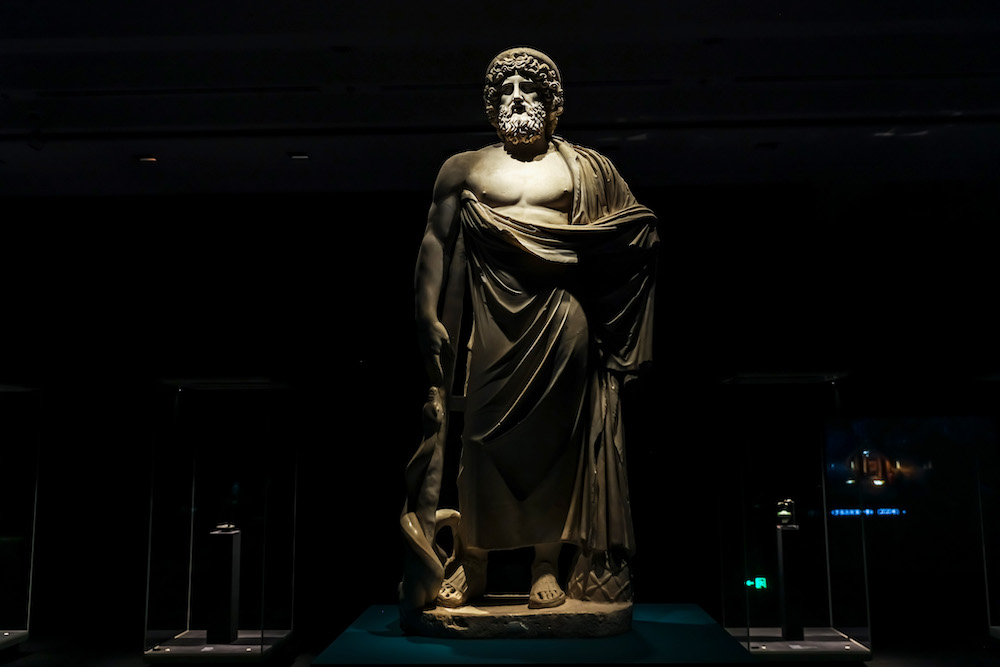
Marble of Asclepius, 2nd century AD, National Archaeological Museum of Naples, Rome
Cultural Exchanges on the Silk Road
The Paper: The exhibition involved the exchanges between the Chinese Han Dynasty and the Roman Empire. How did the exchanges unfold at that time, and how are they presented in the exhibition today? Which exhibit best reflects the story of exchanges between China and Rome?
Darenli: Since the third century BC, the Silk Road has witnessed the continuous flow of individuals, commodities, technologies, ideas and artistic subjects, which facilitated the long-distance dialogue between ancient Rome and China. Although the ancient Romans and Chinese never interacted directly, there are numerous references to Daqin (Roman Empire) and Siguoren (Chinese) in the Book of Later Han and Latin literature. At the beginning of the exhibition, we cannot help asking: How did the Chinese and Romans imagine each other in the first and second centuries AD? The answer to this question can be found in the "Book of the Later Han Dynasty" and the historical documents of many Latin writers (including Pliny the Elder and Ama Annus Marcelinus, etc.). In addition, in the "Power and Beauty" section, the marble statue of Lucius Verus the Great (AD 130-169) occupies the center of the hall, and he is Marcus Aurelius the Great (AD 121-180). year) foster brother. According to the "Book of the Later Han Dynasty", in the era when these two emperors ruled together, that is, in 166 AD, the Great Qin King Andun (probably Marco Aurelius) sent a mission from Southeast Asia to China.

Exhibition view, Statue of Lucius Verus in Plate Armor
A pottery portable brazier from the 1st century AD was on display, and some viewers questioned whether it was related to China. I don’t think it has been influenced by China’s ceramic tradition. Every civilization needs to find a way to keep warm. Pottery is an easy-to-obtain material with a relatively strong heat preservation function. So not only in ancient Rome, but also in other early human civilizations, pottery products were used as heat preservation tools.
But on the Silk Road, the most common transaction between ancient Rome and ancient China was silk. The ancient Romans preferred to use silk for clothing, so in Latin literature, China is called the country of silk. There are even documents condemning the extravagant use of silk by ancient Roman rulers and nobles.

Bronze Statue of Hercules, 1st century AD, Herculaneum, National Archaeological Museum of Naples
Furthermore, there is a "Bronze Road" earlier than the "Silk Road". In terms of bronze production technology, ancient China has reached a certain level. In the 14th century BC, the bronze technology of the Sanxingdui civilization was mature. Archaeological research also shows that the bronze technology was introduced from Asia to Europe. or the sixth century, to the third century BC). Probably the ancient Roman aristocratic family was very interested in Chinese bronze and bought it. In the 1930s, in a lake near Rome, archaeologists salvaged two wooden boats with some bronze gadgets on board, which were proved by research. The bronze fittings were not produced in Rome, but were cast using ancient Chinese casting techniques. These two examples are relatively direct evidence of the influence of ancient China on ancient Rome. Technologies interacted with each other in continuous exchanges. For example, in Chinese tradition, there is no record of the technology of making glass. Most of the glassware unearthed from archaeological excavations in the Tang Dynasty entered China from Central Asian countries. At that time, the glass production technology in ancient Rome was relatively developed.
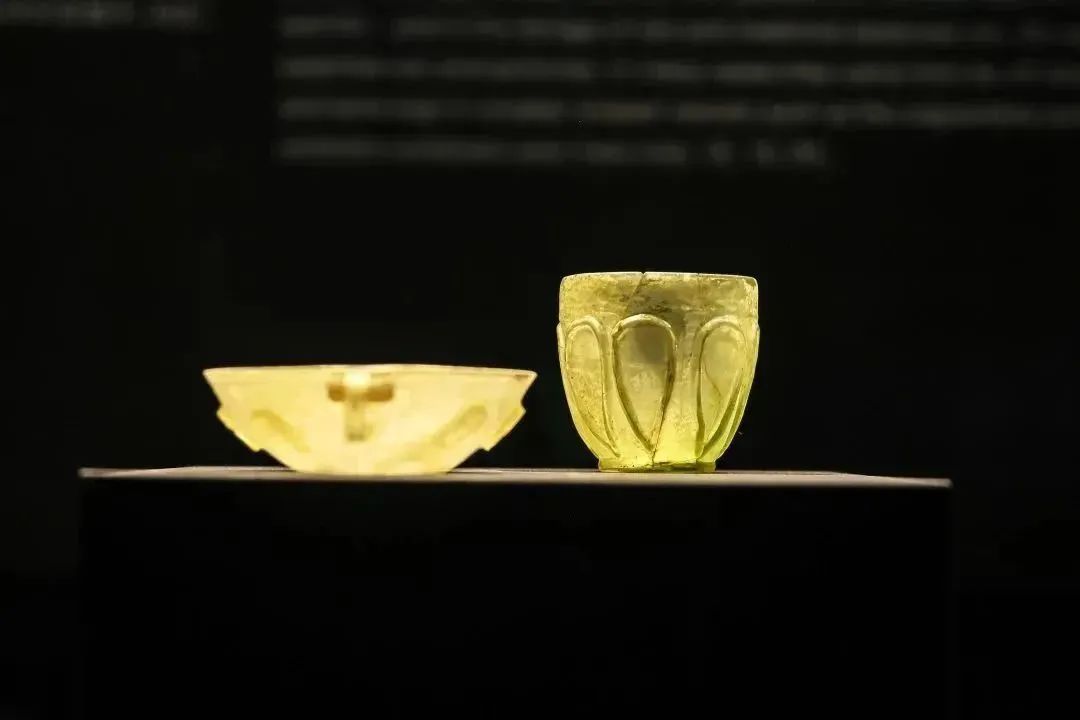
glassware on display
Although there must have been contacts and exchanges between the East and the West on the ancient Silk Road, the art of the two is different, such as relief, in the Han Dynasty in China, the relief stone and the brick in the Han Dynasty, and in the Etruscan civilization before ancient Rome in central Italy. very common. The materials commonly used in the sculptures of the two civilizations are also different. China mostly uses wood carvings and clay sculptures, while the West uses more easy-to-preserve marbles, which also allows us to still appreciate the sculpture art of BC.
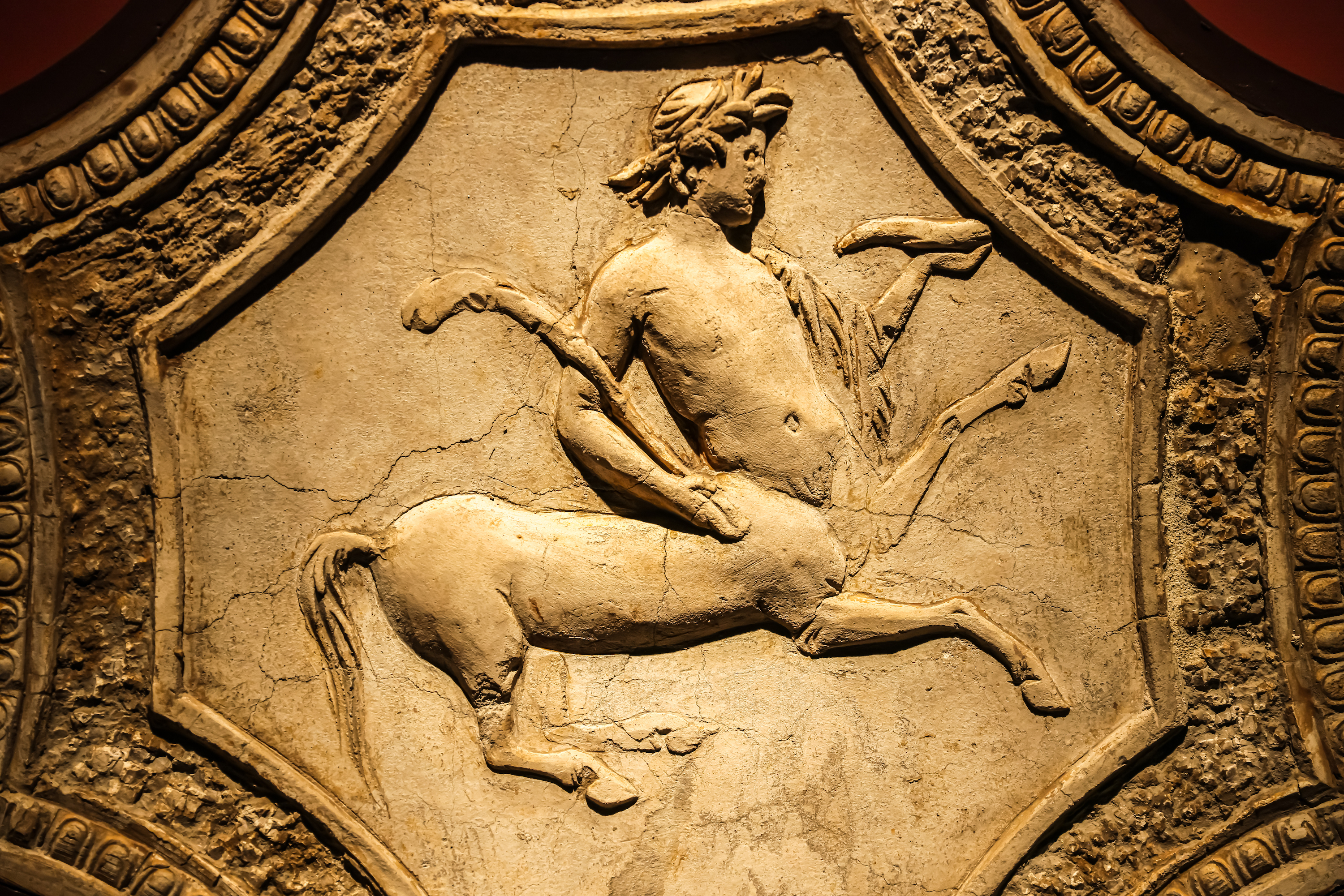
"Stucco Ceiling"
The Paper: Murals are often the best way to restore the living conditions of people at that time. Through the murals exhibited this time, can we see what kind of life the ancient Romans lived?
Mario Grimaldi: painter of house decorations in Roman times selected portraits of different subjects, including mythological stories (op. 39), epic and dramatic poems (op. 65) and scenes of everyday life, in which a restored The colorful world of clothing colors (works No. 64 and No. 63).

Ladies in a boudoir, Herculaneum, painted fresco, 1st century BC-1st century AD
Darenli: Through the murals of Pompeii, we can understand the life of the ancient Romans. For example, "The Girl in the Boudoir" can see how ancient Roman women dressed in the small environment of the garden. More murals can also see how people interact in public places, and a mosaic work in the exhibition depicts the scene of Dionysus procession. Dionysus, the god of wine in ancient Greek mythology, is a god similar to Apollo. Apollo is the god of light, music and art, and Dionysus is more inclined to the power of nature. In the center of this mosaic is a lion surrounded by some mythological figures and priestesses. This work presents a mythological scene, and Dionysus is also in the picture, witnessing this procession of his own.

Exhibition site, the ground is "Lion and Bacchus Procession Scene Mosaic", stone mosaic, 1st century BC, Pomme, National Archaeological Museum of Naples; the wall is "Stucco Ceiling", stucco, AD 1st century, Vesuvius site, Naples National Archaeological Museum
As these two works represent, nearly all of the exhibited works are subsumed under two themes of real life and mythological tradition. What the exhibition presents is also the origin of important human life and inspiration, which comes from God. Although there is no Zeus, the king of the gods, in the exhibition, his two children Apollo and Venus are displayed in the last exhibition hall, and Asclepius is the son of Apollo. The exhibition tries to create a space for art and life, and also hopes to enlighten the audience that all myths and traditions are the source of inspiration for human daily life.

(Left) "Apollo Holding a Sitar" Wadi Hammamet Greywacke; (Right) "The Back of Venus" Marble
2nd century AD, Rome, National Archaeological Museum of Naples
The Paper: Murals are the most difficult cultural relics to preserve and exhibit. How do the Italian cultural relics departments and museums do it?
Mario Grimaldi: The practice of separating a fresco from its original setting was especially common in the 18th and 19th centuries, but since the beginning of the 20th century there has been a tendency to limit this in order to preserve the original relationship between space and decorative objects. practice. Currently, separation is only used in extreme cases where it is necessary to protect decorative items from erosion due to factors such as time and air pressure. The work of restorers is vital to the preservation of the murals, monitoring and intervening in time over time. Exhibitions also play a role in the conservation process, with artworks being removed from storage for display and restoration.

Leda and the Swan, painted fresco, 1st century AD, Pompeii, National Archaeological Museum of Naples, image courtesy of National Archaeological Museum of Naples
The Paper: What is the current archaeological research on Pompeii and Herculaneum? What are the future research directions?
Mario Grimaldi: thanks to the work of the heads of local institutions, the archaeological areas of Pompeii and Herculaneum are carrying out a rich program of restoration, research and restoration of the monuments of the two most important civilizations in the world and protection. I had the honor of being part of the Pompeii project, starting the process under the guidance of Professor Massimo Osanna (Director of Museums at the Italian Ministry of Culture). In the first years we first dealt with security issues in many existing buildings and decorations, the preservation of which urgently required intervention. Today, these two archaeological regions make this path of restoration, research and conservation more accessible by making new data and elements to understand the site available to a wider and wider audience.
The exhibition will last until April 9, and the "China-Italy Year of Culture and Tourism" project will continue in 2023.
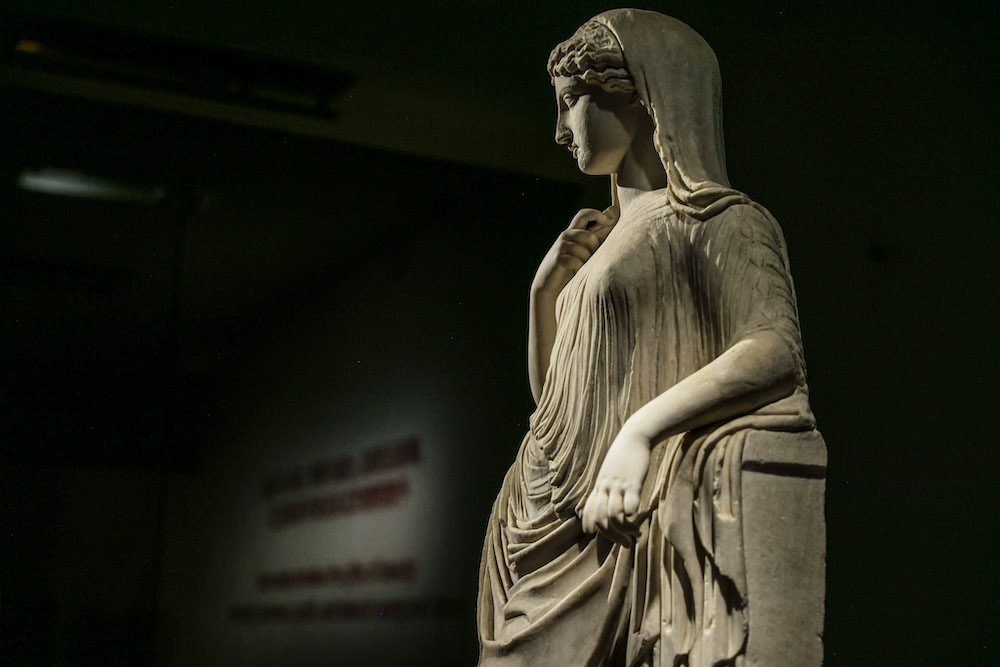
Exhibition View "Reclining Aphrodite"
[Note: Darenli is a Doctor of Oriental Studies at Naples Oriental University. He has published many papers and books related to Sino-Italian cultural relations, and as an academic curator and instructor organized "To the East, Cities, People and Gods on the Silk Road" (exhibited at the Baths of Diocletian, National Museum, Rome, from October 2011 to February 2012) and The Art of Francisco, Great Italian Art of the 13th-15th Centuries and the Land of Asia (exhibited from Exhibited at the Accademia Gallery in Florence in 2015); Mario Grimaldi is the archaeologist. 】
